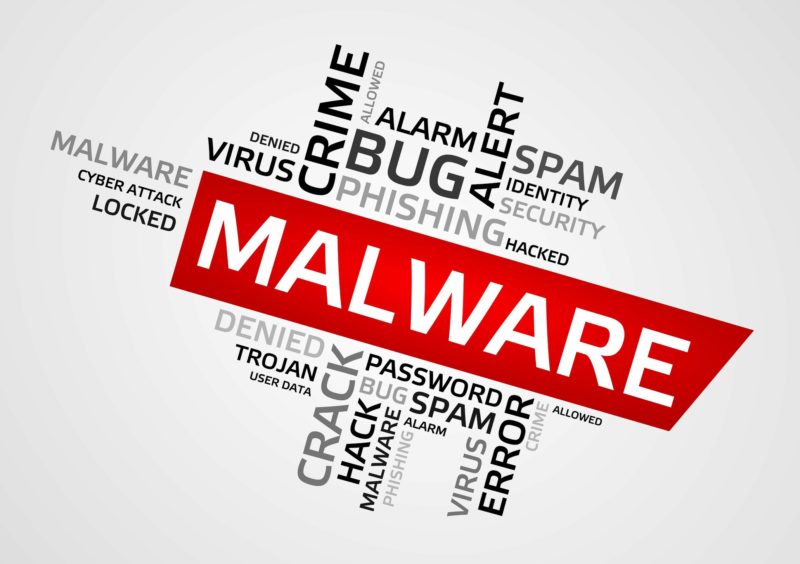We live in a time where the Internet has become an essential part of our lives. We communicate with friends and family online through social media, emails, etc., shop, pay bills, book tickets, and do a lot more with our laptops and smartphones. However, this convenience has some dangers too. So just check out this Most Common Computer Security Threats and How to Protect from them.
Today, cybercriminals in different corners of the world target Internet users in a variety of ways. Some use online viruses, while others try to scam them through emails and malicious websites. Although Most Common Computer Security Threats vary in scale and intensity, they can be divided into three main categories:
1. Malware Attacks –
Malware is a harmful program that’s engineered to promote unwanted behavior in a mobile or computer. There are many ways it can enter your device, such as visiting unrecognized websites, installing pirated software, opening malicious emails or links, etc.
There are millions of malware on the Internet, which can be divided into different families depending on their behavior. Some of these are:
-
Adware:
These programs don’t really cause harm but affect your system’s performance nonetheless and become a cause of annoyance. For instance, they may replace your web browser’s default home page and/or search engine, install unwanted bookmarks on the browser’s toolbar, etc. The idea is that if you visit these websites or search engines, then the hacker who created the program is able to generate money from advertisements displayed on these websites.
-
Cryptomining Malware:
As the name suggests, these programs are designed to mine a cryptocurrency like Bitcoin by using the resources of the infected machine. They generate a cryptocurrency for the hacker by performing complex calculations using your computer’s processing power. Since these programs are incredibly power-hungry, they can cause a massive drop in your system’s performance and trigger freezes/crashes.
-
Ransomware:
Ransomware is some of the most dangerous and powerful malware existing today. They can easily hide from your system’s security measures and stay dormant indefinitely. They wait for a suitable time when the machine is vulnerable and launch an attack to encrypt your computer files and lock you out of the system. In order to regain access to your computer, you are asked to pay a ransom (hence the name ransomware).
2. Phishing Attacks –
Phishing attacks are social engineering attacks that aim to steal your personal or financial information such as bank account details, credit card information, etc. These attacks cost American businesses half a billion dollars every year, which only goes to show how dangerous they are.
In a phishing scam, the fraudster tries to trick you into opening a malicious link in an email or instant message by masquerading himself as a trusted entity and takes you to a fake website where you are asked to share sensitive information.
Let’s take an example of John, who became a victim of a phishing scam.
John was going through his inbox one day when he noticed an email from his bank. The subject line read fraud alert: immediate action required. So, he opened it instantly only to be informed that hackers are attacking his bank account, and he must change his password immediately. A link for the same was shared as well. So, he clicked it and was taken to the bank’s website, where he entered his current password and a new one. He then closed the page, relieved that a potential fraud was averted. In reality, he was scammed.
In instances like these, what usually happens is that the email is not actually from a legitimate entity. However, the swindler tricks you into believing otherwise by creating a sense of urgency. So, when you click the link, you are taken to a website that looks genuine but, in reality, is not. When you enter your personal or bank details on this website, it actually gets shared with the cybercriminal, who then uses it to initiate unauthorized transactions.
To protect yourself from phishing attacks, it’s highly recommended that you check with the authorities (the bank, in this case) if they actually send an email. You should also check the sender’s email address to verify the email’s genuineness.
3. Brute Force Attacks (Weak Password Vulnerable) –
In brute force attacks, the cybercriminals try to guess your online passwords or use an extensive trial and error strategy by using a dictionary of passwords against your login credentials.
You can easily fall victim to a brute force attack if you use weak passwords such as 123456, john123, etc. or use the same password for all your accounts.
(Guide) Most Common Computer Security Threats and How to Protect from them
There are many reasons why websites need security services these days as website attacks are becoming more and more rampant. However, you have reasons to protect your privacy too. For that, you can take the following steps:
- Avoid using weak passwords that are just a string of numbers or common words. Strong passwords are a combination of uppercase letters, lower case letters, numbers, and special characters, such as Accnum122$. Use password managers to create unique and strong passwords for different accounts.
- Install reliable and comprehensive antivirus software on all your devices, including laptops and smartphones. For instance, total AV Antivirus is one of the most affordable and powerful antivirus programs in the market, which offers real-time security, top-notch customer service, and protection from all kinds of Most Common Computer Security Threats, including ransomware, adware, spyware, etc. You can use it for your Android and Apple devices too.
- Try not to use public wi-fi when accessing sensitive information online, like your bank account or social media account. If you have no choice, then at least use a VPN service.
Conclusion:
Although cybersecurity has become an important issue today, the majority of online attacks can be easily averted if you are informed and take the necessary precautions. By merely applying the information given above, you can safeguard your privacy to a large extent. So this is all about the Most Common Computer Security Threats and How to Protect from them a guide for you.









Thanks for every other informative web site. Where else may just I am getting that kind of information written in such an ideal way? I’ve got an undertaking that I’m simply now running on, and I’ve been at the lookout for such info.